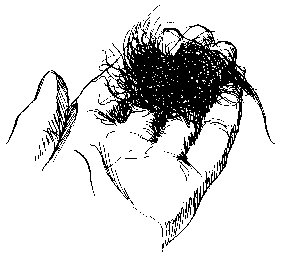Common Aquatic Plant Management Problems
Please note:
This information is intended for educational purposes only. References to commercial
products or trade names are made with the understanding that no discrimination is intended of
other products which may be available. Any herbicides recommended herein for the treatment
of aquatic vegetation have been registered by the Environmental Protection Agency for use
in the manner described. The registration and use of a particular product may change
therefore the information provided here may not remain current indefinitely. It is the
responsibility of the user to read and follow the manufacturer's label to prevent misuse
of the product.
Pithophora Algae

Scientific Name - Pithophora
Common Name - Cotton-ball Algae/Horsehair Algae
Distribution and Habitat
Pithophora is found statewide but found most commonly from the piedmont eastward throughout the coastal plain. It thrives in shallow ponds with low flow and is often associated with ponds receiving nitrogen and phosphorous enrichment. Pithophora may form extensive surface mats during the summer months. This dense and prolific growth often interferes or prevents fishing, irrigation or other utilization of the pond. Pithophora is recognized as one of the most difficult and persistent species of aquatic vegetation to control.
Description
Pithophora belongs to the family of filamentous green algae. It may be found growing on the bottom or in dense mats on the surface. This algae is often described as resembling a tangled mass of cotton or wool-like growth which is very course to the touch. Under magnification Pithophora is composed of irregularly branched filaments usually with numerous swollen spore-like reproductive cells known a akinetes. It may range in color from lime green to a dark greenish brown. The surface mats generally form in warmer weather when gas bubbles, produced by the plant, are trapped within the dense algal growth, causing them to become buoyant. Disturbance of these mats by high wind or heavy rain events may cause them to temporarily sink to the bottom. This often gives a false impression that the growth has "disappeared", only to have it return to the surface within several days.
Recommended Control Methods
1. Diquat Dibromide
Active Ingredients: Diquat dibromide salts
Product Name: Reward; Weedtrine D; Aqua-Clear
Approximate Cost: $90.00 - $100/gal
Application Rates: 1 - 2 gals/surface acre
Application Methods and Control Tips:
Early detection and treatment will result in more successful control of Pithophora. The bottom growth of this plant will be very difficult to kill. The herbicide must be applied as a spray application to surface mats and should be mixed with enough water to ensure even coverage of the treatment area. Higher rates of the herbicide will be required in areas of dense growth. A non-ionic surfactant such as Ortho 77, Induce, Passage, Quickwet, etc. should be incorporated with the herbicide at a rate of 1/2-2 pints per 50 gallons of mixture. Dibromide should not be applied in muddy water as the herbicide will be inactivated. Additional product directions and precautionary statements are listed on the herbicide container. READ AND FOLLOW THE HERBICIDE LABEL.
2. Copper Chelates
Active Ingredients: Elemental Copper
Product Name: Cutrine; Cutrine Plus; K-Tea; Av-70
Application Rates: *.50 - 1.0ppm active copper. Rates are based on acre/feet.
Refer to herbicide label for determining specific application rates.
Toxicity of these products to fish and other aquatic life increases when used in waters with low, "soft" water hardness. Do not exceed 0.8 ppm. concentrations in water with alkalinity less than 50 ppm.
Application Methods and Control Tips:
Surface mats should be treated with a spray application. The desired concentration should be mixed with enough water to ensure thorough coverage of the treatment area. Allow one to two weeks if retreatment is necessary. Additional product information and precautionary statements are listed on the herbicide container. READ AND FOLLOW THE HERBICIDE LABEL.
3. Dibromide and Chelated Copper:
Increased efficacy may be achieved using these two herbicides in combination at a rate of one part dibromide to two parts copper chelate. This should be conducted following the same application methods described for the use of dibromide.
Consult the fisheries biologist serving your county or more details concerning use of these products.
4. Sterile Grass Carp (White Amur)
Grass carp are not recognized as being an effective alternative for controlling Pithophora.
The above information is available as a downloadable PDF - Pithophora
